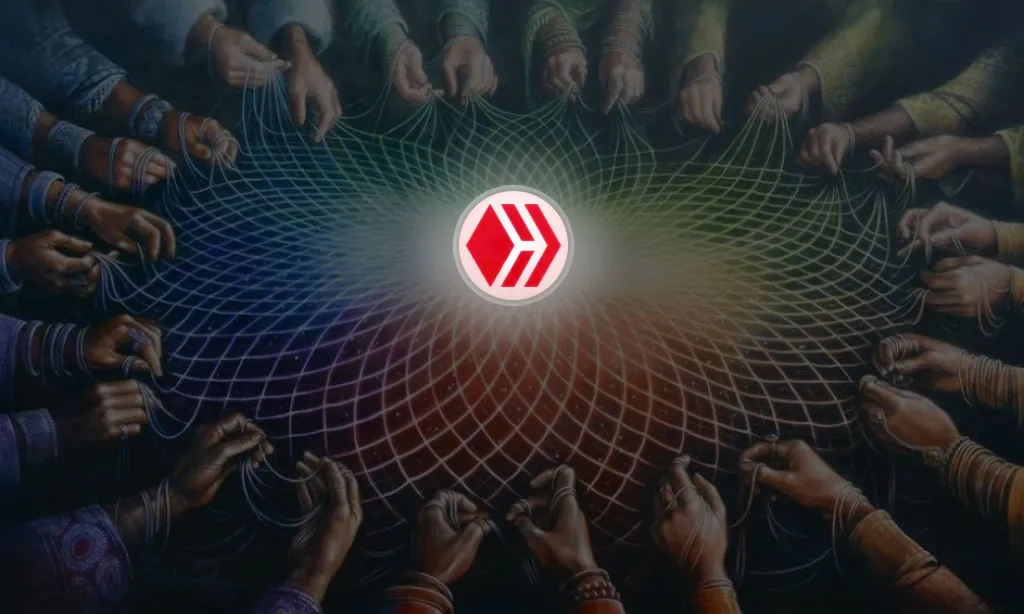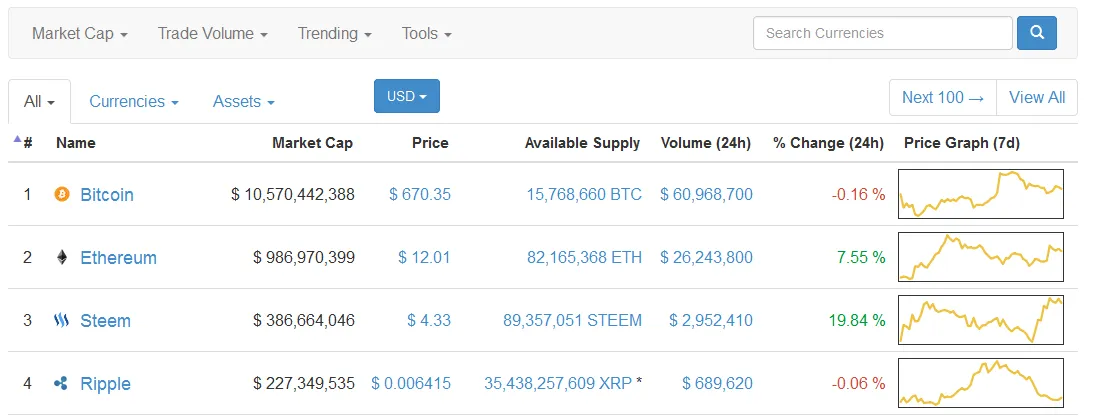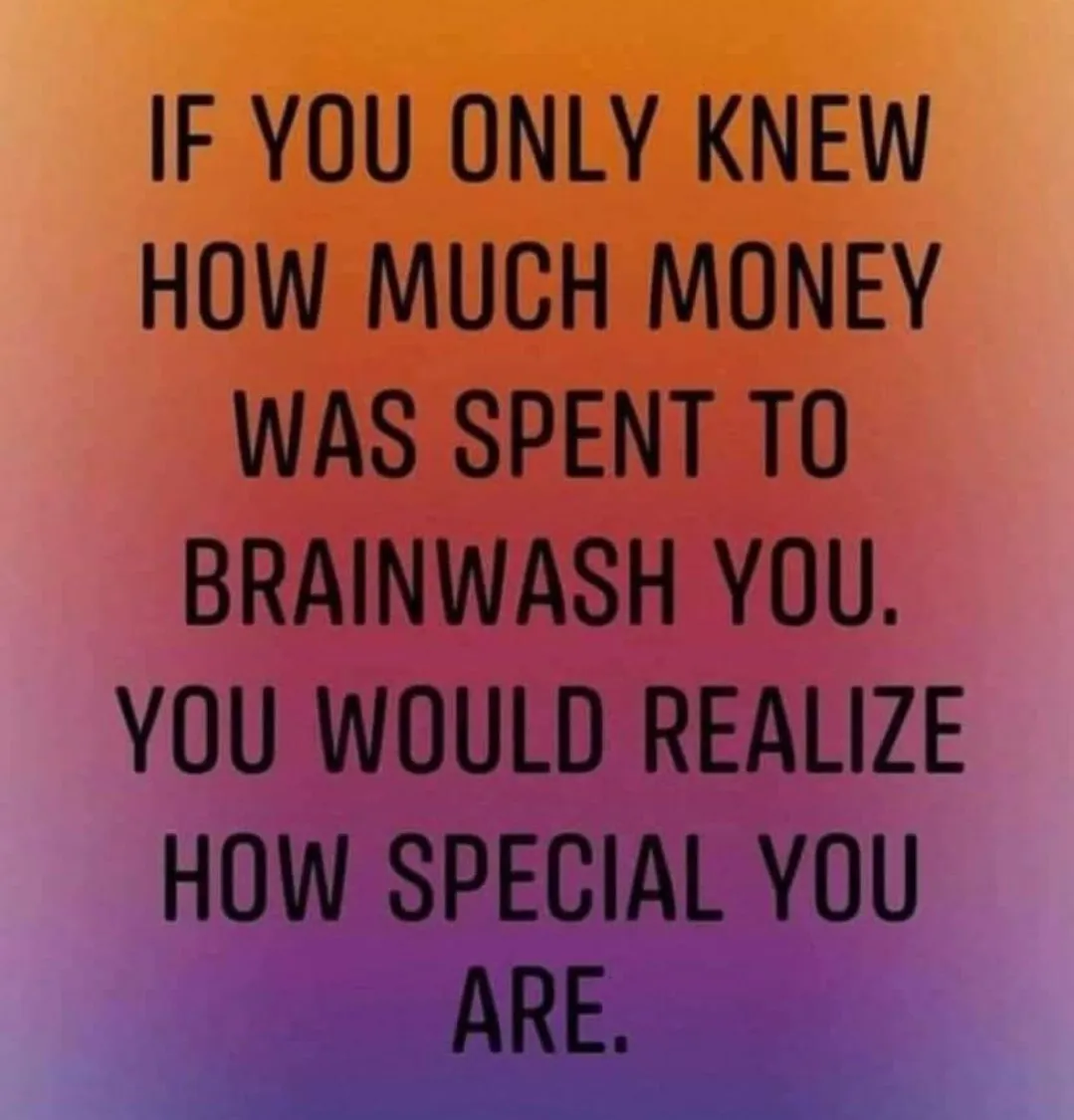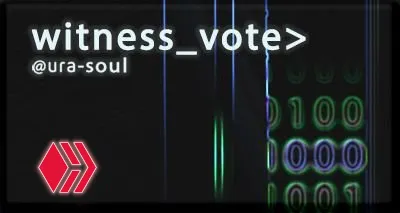The story of our decentralised & uncensored social networking ecosystem, commonly known as 'The Hive Blockchain', has so far been a roller-coaster - full of twists and turns! From it's meteoric rise as a multi billion USD ($) cryptocurrency (with a historic top 3 position in the world crypto ranks) through to the drama of it's birth via the software 'fork' that created Hive, the power of our technology is immense.
This is the first in a series of articles on the big picture of Hive and also the future of global community itself. Where does both Hive and humanity as a whole, go next? How do we arrive there in ways that bring smiles to all of our faces? These are not simple questions to answer.. but answer them we must!

Decentralisation is a strong point of the Hive community, but it comes at a cost - we tend to lack a shared objective or vision which we can rely on to guide our creativity. While centralised (corporate) social networks can be said to fail us due to their constant denial of individual liberty (free will), they do at least have the ability to put internal processes in place which measure user feedback and brainstorm new features and ideas which will keep users excited. The successful development and growth of centralised social networks is based on an evolving form of science that has not generally been applied yet to Hive (at least - not out in the open).
Prior to Hive, it's 'sister' project 'Steem' experimented with a hybrid of centralisation and decentralisation. Hive, to it's credit, has utilised a purer form of decentralisation - but this comes with it's own cost. Now, I feel, it is time to agree on ways that can plug the gaps in Hive's operations which were previously (somewhat) filled by Steemit Inc's centralising effect.
Steemit inc, for all of their failings, were able to achieve specific goals due to their centralised structure, which Hive has found difficult. I am not suggesting that we centralise Hive, instead I envision us finding new ways that we can direct our strengths as a decentralised community. Reaching reasonable and logical growth targets requires this, as evidenced by the fact that - for one - Hive is consistently out performed by many less worthy (centralised) competitors in the 'So-Fi' space!
Ironically, the lack of decentralisation in many crypto projects - that tends to lead to their downfall - is part of what helps them to keep going prior to their demise! The never ending stream of new projects created in the 'crypto' space means that Hive's presence is continually being lost in the backdrop of noise created by weak competitors who cannot serve humanity's needs but which gain attention/focus anyway. We need to change this.
To begin and to ensure we are on the same page, I am going to recap on the Hive journey so far - focusing on the unique strengths and weaknesses of the Hive system/community. The principles of freedom that are baked-in to Hive have the potential to both reshape the internet and also catalyse changes in wider human society too - so I'll be touching on much more than just technology here.
The process of improvement in systems is one of aligning needs, visions and actions. As more of our problems are overcome we will realise just how much power we truly have. We need to aim for some degree of harmony and consensus in the community to fully bring this power to life for our mutual benefit, so - finding a path to being aligned as a cohesive group, through shared values, is paramount!

Hive's Origin & Evolution
The Hive blockchain began as an experimental concept in 2015/2016 and was initially called 'Steem'. The Steem blockchain was cultivated and launched by Steemit Inc. - a company run by @Dan Larimer and @Ned Scott - utilising the skill of some of the familiar faces we still see today on Hive, such as the team from @Blocktrades and others. This was the early days of crypto, so much so that many of today's 'influencers' were not even involved in crypto at that point and are in the dark as to the extended roots of the technology they are promoting.
Steem/Hive was born from 'anarcho capitalist' philosophy and ideology, which is an idea that needs some explanation. 'Anarcho' is from 'Anarchy' which only means 'no rulers' - so an anarchic system is one that does not support people ruling over each other. The 'Capitalism' aspect of the philosophy is essentially the usual idea that people can increase personal power through privately owning resources and trading/exchanging them along the way. History is full of battles and struggles of people attempting to rule/control others and/or trying to escape the rule/control of others - anarchy sees this as futile and instead allows a natural, harmonious order to emerge. Ultimately, anarchy is our natural state until someone decides to try to overpower someone else!
While this detail might not seem initially obvious or even important to regular users of Hive's many social networking websites, the anarcho principles that underpin the technology are all around them. There is no-one to turn to if you lose your master account password and there is no corporate complaints procedure to turn to if you don't like something. At the same time, no-one can easily shut you down and tell you what to do! There are some caveats to this but ultimately this is all an experiment in real freedom - which is something of a rarity even (especially) in the 'land of the free'!
This anarchic foundation is part of the reason why the Hive system has never been sued and is extremely difficult to shut down. If any of the people running the system are attacked, others simply replace them who may be in a completely different geographical location and have access to entirely different resources and defences.
As a reminder, if we examine the valuation history of Steem on Coin Market Cap, we can notice that the valuation of Steem reached between 1.5 and 2 billion US Dollars at the start of 2018! This followed only a few months of meteoric growth - with minimal outlay on advertising.

At that time, Steem was accelerating rapidly, showing signs of potentially toppling the social media empires of Facebook and other 'Silicon Valley' corporate networks. Despite mainstream media paying little attention, Steem attracted large numbers of new users each week and even became the fastest growing technology in South Korea.
The promise of the technology was clear to many, who both predicted and gambled on the likelihood of Steem creating disruption in the social networking industry in a similar way to the disruption that Bitcoin was causing for banking and global currencies.

Steem even reached the top 3 position on Coin Market Cap, which today would make it a household name - yet it seems that few today even remember Steem - why is that?

Original Selling Points
In order to define Hive's place in the word today, let's take a look at some of the features of it's estranged 'sister' system - Steem - that really grabbed people's attention back in 2017:
- Decentralisation & Free Speech: The first ever truly decentralised solution for social networking. Promising that no central entity would control the technology and therefore provides a censorship resistant solution that is very hard to shut down.
- 'Proof of Brain' / Earning Rewards: The first ever way to consistently earn money/cryptocurrency for producing digital content, blogging and for engaging in communities online. The system is based on a 'proof of brain' algorithm that constantly creates valuable new crypto tokens which must be distributed among the network's users in response to community voting patterns.
- Free Financial Transfers: A secure storage of wealth with almost instant settlement of transactions and no transaction fees.
- Self Determination: Self ownership and community governance rights. Everyone with an account owns their own content (which cannot be deleted by other people) and has the ability to participate directly in the governance and future of the the entire system.
- Growth Platform: Anyone can build a website powered by the data on the blockchain and gain immediate access to the pre-existing community of users and therefore also to a targeted audience.
- Community: Being in a decentralised community (also one that is based on a cryptocurrency) means that everyone on the system shares something in common, which is somewhat uncommon in the wider society. Strong friendships are formed and networking takes place that bonds people of like minds who otherwise would possibly have never met each other.
Clearly, this was/is a system that had and still has much to offer, yet as we shall see, a combination of internal factors and outside forces limited Steem/Hive's growth.

Why Steem Lost It's Steam!
The answer to the question of why Hive/Steem is not a household name today is complicated, but the following are certainly relevant pieces of the puzzle:
- Failure to Fully Decentralise: The mining process at the initial creation/inception of Steem was not transparent and not entirely decentralised. Some of those involved in the creation of the Steem blockchain took nefarious actions to ensure that they themselves received more of the initial Steem token distribution than they should have. This is known as the 'ninja mine'.
The secretive creation of tokens at the inception of Steem misled investors and also resulted in the owners of Steemit inc. having more power on the resulting social network than was right/fair. This caused many problems for Steem which were difficult to address at that time.
- Unoptimised Management of Project Development :
Steem was developed at high speed and was incomplete as a social network at launch. A lot of work was needed to optimise the back end and reduce the cost of running everything 24/7. This ultimately led to resources being directed away from customer centric features that people were coming to expect when using social networks. Facebook had billions to invest in creating a slick user experience, while Steem sites seemed clunky in comparison. This held away many casual and unsophisticated users, stifling growth and preventing Steem from directly challenging Facebook/Twitter at scale.
- Competition & Control: As a majorly 'disruptive' technology, Steem posed a huge threat to existing monopolies. A decentralised & uncensored 'network of the people' is not something that the controllers of Silicon valley want to see succeed. Business moguls and their investors rely on their ability to create empires, which - generally - are not helped by the general population becoming empowered. Empires rely on weaknesses being prevalent among the masses.
Silicon Valley corporations seemingly took action to thwart Steem (and any other decentralised projects) by halting advertising of crypto projects on their networks (and in other ways). Since these corporate interests control over 66% of all internet traffic, they had/have sufficient reach/sway/pull to hugely slow the growth of Steem.
Media organisations also noticeably avoid the topic of real decentralised social networking at every possible opportunity - perhaps because they realise that they can't compete with true free speech and true information empowerment of individuals on a global scale. You won't find Hive (or Steem) mentioned on any of the relevant pages on Wikipedia or much mention of it in the work of 'journalists'.
N.b. Let's not forget Facebook trying to sell their own social crypto currency token called 'Libra' that literally used the Steem logo, rotated by 90 degrees!
- An Inevitable Attack: During the early stages of the COVID19 'phenomenon', a billionaire from Wuhan (China) launched a hostile takeover of Steem which took the community by surprise. In true Orwellian (1984) style, he bought control of Steemit Inc. and used his power position to centralise his control over the network, to censor it and to completely change it's operation without gaining community consent. The documentary 'Freechain' covers some of the details of this story - I highly recommend watching it.
We may never know the true aims of this attack on Steem and free speech, but it is abundantly clear that there are wealthy groups who oppose free speech - often while generally claiming otherwise.

We should not be surprised that Hive's journey has been turbulent, after all, every powerful tool attracts those who seek to use it to do harm as well as good. There are those too who proudly proclaim that they are supporters of real freedom, while at the same time they promote limiting and outdated ideas that work steadfastly AGAINST real freedom!
If we use all of this as a giant learning opportunity, with open minds we can take the right action to evolve Hive to the level of greatness that is so clearly possible!

The Steem Community 'Differentiates' & Hive Is Born!
In response to the hostile takeover of the Steem Blockchain by Justin Sun (Tron Foundation), key members of the community forked (copied) the source code for Steem and created a new version of the blockchain system, which was named 'Hive'.
In this newly created version of the blockchain (now called 'Hive'), the original 'stealth mined' tokens were taken away from their new owner at Steemit Inc. (Justin Sun) and repurposed for the good of the whole community as a DAO fund (Decentralised Autonomous Organisation) that can today be used to pay out to worthy projects that intend to do work to grow Hive. Instead of the community and network being stuck with a huge centralisation problem, the earlier transgression was now transformed into a force for large scale decentralisation.
Hive today is a much stronger design than Steem ever would have been or could be, which can only be a positive for us all and for the world in general. Despite this, however, the fork resulted in the community splitting - with some people staying on Steem, while others migrated to Hive. This resulted in the total community size significantly dropping and a huge dip in the momentum that the Steem community had worked so hard to build up.
It was as if a phoenix had been reborn from a great fire, but no-one was interested in beautiful birds any more! Instead, there were NFT crazes to grab the internet's attention and all manner of 'experts' and 'influencers' appeared, trying to sell the next big thing - which nearly always lacked meaningful utility and any real potential to improve the world.
'Three things cannot be long hidden: the sun, the moon, and the truth.'
So here we are, users of a technology whose essence far surpasses what is on offer from all competing systems and that has already solved problems that many of the* 'crypto influencers'* are only in the early stages of even thinking about.
In the next sections we will begin to take a look at the challenges we face in marketing Hive and I will throw in some relevant insights that we can use to help us plan to help the Hive community to grow and evolve into the world powerhouse solution that it is destined to become. This is a much larger topic than most commenters seem to appreciate, but we can tackle it by breaking it into bite sized chunks!

Marketing Hive & Accelerating Growth
The essence of the core features of Hive have changed relatively little since the early growth days of Steem. Although new features have been added, including better support for sub communities and a lot of efficiency improvements behind the scenes, Hive still largely offers similar features to those that Steem offered prior to the fork.
While some in the Hive community have claimed that it is the basic features of Hive that are holding it back, I take the view that in actuality these are the features that got Steem to be almost the most successful crypto project in the world at that time and which can still captivate the imagination of the world if expanded on and developed/marketed optimally. Of course, we need to add in plenty of special sauce too, but we'll get to that.
Remember that a blade can either harm or be used to heal. Handled inappropriately, Hive cannot achieve it's goals and so we need to focus, prepare and think clearly before acting, but we must act. My aim in this and upcoming posts is to provide ideas and insights that can help us to navigate to success - whether we are software developers, entrepreneurs, investor stakeholders or general community members and users of the system.
I will get into the details of specific subtasks within the overall growth strategy that Hive so desperately needs in future posts, but for now I want to stay more general and high level.

Relevant Selling Points of The Hive Blockchain As We Enter 2024
If Hive is to play a part in solving some of humanity's problems and improving our lives, then we will need to expand and to grab the attention of potential new users. This means we need to meet the real needs of real people, plus to also make sure that they know we are doing so and they can't afford to miss out!
Let's assess Hive's strong points as of today and then move on to exploring the near future. These are among the reasons why people might find value in Hive and decide to explore what's on offer. Some of them may need adjusting to be fully optimal, but their essence is clear enough.
For the most part we can include the previously mentioned selling points of Steem in this list too, by default. Additionally, Hive is so unique that we have no real competition for some of these areas, but sadly the public has not been made sufficiently aware of the potential and reality here. The many strengths span and combine specific technical features with more abstract details that act to open doors for us into new territories and new opportunities:
- Empowering Individuals & Community: Users are financially incentivised to create and consume digital content, plus to engage with each other and even rewarded financially for curating the content when they vote on other people's comments/posts. Those who hold onto the tokens they receive are economically incentivised to participate further in the community and also gain real world power as a result. They may also receive further rewards for completing tasks that community stakeholders agree are valuable.
- Self Governance & Real Power: Simply by creating unique media content, people can receive the necessary stake to be incentivised by point 1. This creates a circular process of motivation, engagement and creativity. This then results in more than mere 'clout' or 'points' on a website - the rewards translate directly to real world money that can be used to buy/transact the necessities in life (and anything else that money buys!).
Users essentially 'own' their own data and account, so can rely on their investment of time/energy/money being available/secure in future and not arbitrarily removed by someone else. Even governments will find it difficult to interfere with this situation due to the decentralisation of the people/technology that keep Hive running.
The scope here is much larger than the features we see today on Hive sites, it has long been foreseen that Hive's tech can be upgraded to facilitate the management of real world projects and community operations.
- Long Term Vision = Rewards & Growth: The community members that stick around can access the potential to exponentially increase their rewards. As people grow their networks, increase their understanding and offer greater value to the community, their rewards are likely to increase - to some extent - proportionately. By holding onto their stake, instead of selling it, perhaps also earning from the very high annual APR (20% currently) on offer to savers of Hive Backed Dollars (HBD), they find ever more value in their participation - long term thinking is rewarded.
- A Base For New Solutions: Anyone can draw on the built in resources and community spirit to create new apps, websites and services on Hive that solve real world problems. This is an area that has had a higher bar to entry than it should have, due to lack of proper documentation and educational materials. However, this will not be too tough to change with the right people and resources made available.
We also have a variety of new features in development that may emerge within the next 12 months, including general smart contract functionality (in development by both @blocktrades and @vsc.network independently) and numerous media and community features due to proliferate from the SPK Network (@spknetwork) too. Given the right support and time, these can form the basis of a powerful decentralised 'operating system' for community building and human interaction online.
Imagine being able to replicate the economic operations of a community, business or other entity entirely on a decentralised blockchain with built in social features and currency! This has long been the vision of many crypto users and we are very close to delivering on the promise of this idea on Hive.
This is about so much more than just blogging - Hive has the unique positioning needed to provide the world with an entirely new basis for community governance!

Identifying Target Audiences & Ensuring They Stick Around
To stand a chance of realising the potential of Hive it is necessary to understand just who is going to use Hive and why. Technology is great, but without people it is pointless. We need to consider the psychology of a large number of people, on both the individual and group levels. What do people need to improve their lives? How can Hive help them? Which particular groups benefit from which features and what specific message will win them over - plus which messages will put them off?
We also need to factor in understanding of economics, governance, history, science and even spirituality too. All of these factors influence how people perceive products/technologies and since Hive is evolving to become such a general tool for life online, they all need to be given consideration.
We cannot succeed simply by blindly posting on Web 2 sites and hoping for the best - this is not a professional or scientific approach. We work with high technology and it is appropriate to handle the strategy and marketing of the system with a similar degree of completeness and sophistication as has been imbued in the technology itself!
For this we will need mechanisms that do not currently exist for gathering data, insights and feedback both from existing users and from potential new users. This is typically carried out by a specific department in centralised corporations, but Hive entirely lacks this at present. In future posts I will describe ways that we can set systems in place that will hugely empower developers and dApp operators on Hive - essentially beginning the process of building a decentralised and somewhat automated marketing dept. for Hive as a whole.
While it is true that there are plenty of people in the past who only stayed here as long as the price of the token was high, it is really the utility of the system that is Hive's strong point. The greater the utility, the more attraction the system has to users. We need to ensure we monitor the market sentiment, plus then direct resources appropriately to ensure that the system adapts to the demands coming from the users that Hive's future depends on.
Instead of seeing other people as competitors for tokens and/or attention, we need to accept that systemic growth requires many new users to come here and for them to actually become evangelists for Hive. Community spirit fosters actual community and the expansion that we need!

Selling The Evolution of Community
One of the challenges with planning a marketing strategy for Hive is that we need to pre-empt the interaction and perception of groups of people - yet Hive itself is a system that motivates and inspires people to change the way they interact and think! By it's nature this is a far harder puzzle to solve than in a typical marketing process for a product or service, but the rewards are far higher too. We don't get to win against the likes of Facebook without being challenged, learning to think differently and creating in revolutionary ways!
Ideally, our strategy must be agile and able to adapt/respond to changes quickly. For numerous reasons I think the marketing of the system needs to be built-in to the software itself, meaning that advertising spend and traditional marketing operations can be kept to a minimum. It is often claimed that Amazon spent very, very little on advertising - yet they are huge today. Clever design and attention to detail enables us to optimise our interactions with the people who interact with Hive and with persistence we can learn to empower the users to promote Hive effectively themselves.
Essentially, this means that software designers on Hive need to be expert at marketing and the field of 'user experience design'. Should we really expect, though, that people independently developing apps on Hive have this kind of expertise and experience on tap? No! In truth, most of the dApp creators tend to lean more towards development than the specialised skill sets involved with business process and user experience design.
Centralised corporations hire seasoned experts specifically to handle the experience of the end users and to ensure that software meets their needs and drives up adoption. The actual task of building/supporting the vision of the designers is the focused role that their software developers keep on top of. Hive is somewhat different and our bridge between development and the audience is under developed, plus resources are often limited.
How do we solve this? Building amazing and engaging communities that people really want to be a part of is just as much of a science as is software development, but we need to have the right tools and people involved. The best possible solution would be for experienced community members to volunteer their time (perhaps in exchange for DHF funding) to work on these issues similarly to how a marketing department works in almost all centralised businesses. However, we currently have no mechanism in place to manage or motivate this - we can only hope that someone might put in a worker proposal to the DHF and then pray that they can really deliver what they say they can!
The community previously agreed to pay out a substantial amount of money to the Ignite marketing company in the US, to attempt to market Hive - but to my knowledge this did not lead to much tangible benefit. Kudos for the attempt, but I hope we can now agree that solving this puzzle requires a different approach and more systemic change than an outside agency can deliver. We really need to evolve our own community to become more self reliant in ways that foster growth and help us to achieve our goals.
We have sufficient funds in the Hive DAO at present to pay for significant work to be undertaken to fix Hive's problems and yet I rarely see any serious moves being made to tackle this. In my mind there is nothing wrong with using some of the funds even to hire independent contractors who are brought in to work on aspects of an organised drive to solve Hive's problems. However, this will not be a simple process and it will require a lot of discussion and planning to carry out effectively and something approaching a community consensus!
I have so many ideas on this and I am mulling over the creation of a proposal for the DHF to put some of this into motion for Hive in 2024. Having spoken with quite a few people on these kinds of topics at the last Hivefest I think there is a lot of support for the general idea, so I am definitely inspired to give it a shot.
To Conclude
My thanks to you if you have read this far!
If you have any comments I'd love to hear them: How do you see us solving the growth challenges Hive faces in 2024? Do you see us evolving to become a DAC (Decentralised Autonomous Community) as a key part of the solution? Do you fancy radical redesign of the entire basis of Hive? Or do you just think that the right Web 2.0 influencers saying the right things at the right time are all we need to trigger the next stage of growth?
One thing is for sure, none of our ideas are likely to be worse than Marc Zuckerberg's vision for human evolution into the Facebook 'Multiverse' 😂

Wishing you well,
Ura Soul

Read My User Guide for Hive Here

Powerful insights into the Hive blockchain are available at my website, Hive Alive.
Including the only way to track downvotes on Hive - The Untrending report

